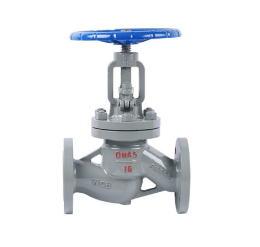Exploring the Role of Check Valves in Hydraulic Systems for Enhanced Performance
The Role of Check Valves in Hydraulic Systems
Hydraulic systems are a cornerstone of modern engineering, utilized across various industries including manufacturing, automotive, aerospace, and construction. Central to the efficiency and functionality of these systems are components that manage fluid flow effectively. Among these components, check valves play a crucial role in ensuring proper hydraulic operation. This article delves into the significance of check valves in hydraulic systems, their functionality, types, and applications.
Understanding Check Valves
A check valve is a type of valve that allows fluid to flow in one direction only, preventing backflow. They are crucial in hydraulic systems where maintaining fluid direction is essential for operational efficiency and system safety. By ensuring that hydraulic fluid flows in the intended direction, check valves help to maintain pressure within the system, protect components from damage, and improve overall performance.
Functionality of Check Valves
Check valves operate based on differential pressure. When fluid flows in the intended direction, the pressure pushes the valve open, allowing the fluid to pass through. When there is a reverse flow, the pressure drop causes the valve to close, effectively sealing off the flow path. This mechanism prevents backflow, which can cause contamination of the fluid system, damage to hydraulic components, and loss of pressure.
Types of Check Valves
There are several types of check valves, each designed to meet specific requirements within hydraulic systems
1. Ball Check Valve This type features a ball that moves within a chamber. When fluid flows in the correct direction, the ball is lifted off its seat, allowing flow. If backflow occurs, the ball is forced down, sealing the passage.
2. Swing Check Valve This valve has a swinging disc that opens and closes based on fluid flow. It's commonly used in larger hydraulic applications due to its ability to handle larger volumes of fluid.
3. Spring-Loaded Check Valve These valves incorporate a spring mechanism that assists in closing the valve when there is no flow. They are often used in systems where back pressure is present.
4. Diaphragm Check Valve This design uses a flexible diaphragm that moves to allow or prevent flow. It's ideal for applications requiring a tight seal and is often used in low-pressure systems.
check valve in hydraulic system

Applications in Hydraulic Systems
Check valves are employed in various hydraulic applications, ensuring reliable performance and system integrity. Some common applications include
- Hydraulic Pumps Check valves are used to prevent backflow in hydraulic pumps, ensuring that they prime correctly and maintain pressure when not in operation.
- Cylinders and Actuators In hydraulic cylinders, check valves help maintain the position of the cylinder by preventing fluid from flowing back, thus ensuring that the load remains stable.
- Circuit Protection Check valves protect against pressure surges and fluctuations, allowing hydraulic systems to operate more smoothly without the risk of damage from backflow.
- Fluid Control By directing fluid flow correctly, check valves enhance the efficiency of hydraulic systems, reducing the need for additional pumps and components.
Importance of Check Valves in Safety and Efficiency
The crucial role of check valves in hydraulic systems cannot be overstated. Their ability to prevent backflow protects sensitive components from potential damage caused by fluid returning to the system in an unintended manner. This protection not only extends the life of equipment but also enhances safety by reducing the risk of system failures that could lead to accidents or significant downtime.
Moreover, by ensuring that fluid flows in one direction, check valves help maintain efficient operation within hydraulic systems. This efficiency translates to lower operating costs, as less energy is required to maintain pressure and flow. As industries continue to evolve, the demand for reliable and efficient hydraulic systems will only increase, underscoring the importance of components like check valves.
Conclusion
In summary, check valves are indispensable components within hydraulic systems, playing a pivotal role in ensuring fluid flows in the desired direction while preventing backflow. Their various designs cater to a wide range of applications, enhancing the safety, efficiency, and reliability of hydraulic systems. As technology advances, the importance of precision and efficiency in hydraulic applications will only grow, making the role of check valves more critical than ever.
-
3 types of check valves maintenance tipsNewsAug.23,2025
-
Ball valves types with trunnion mounted designNewsAug.23,2025
-
Butterfly valve company production capabilitiesNewsAug.23,2025
-
Fisher globe valve technical specificationsNewsAug.23,2025
-
Types of gaskets for flanges selection guideNewsAug.23,2025
-
Wedge gate valve suppliers quality standardsNewsAug.23,2025
-
Breakthrough in Domestic Low Temperature Valve Technology in ChinaNewsAug.18,2025




